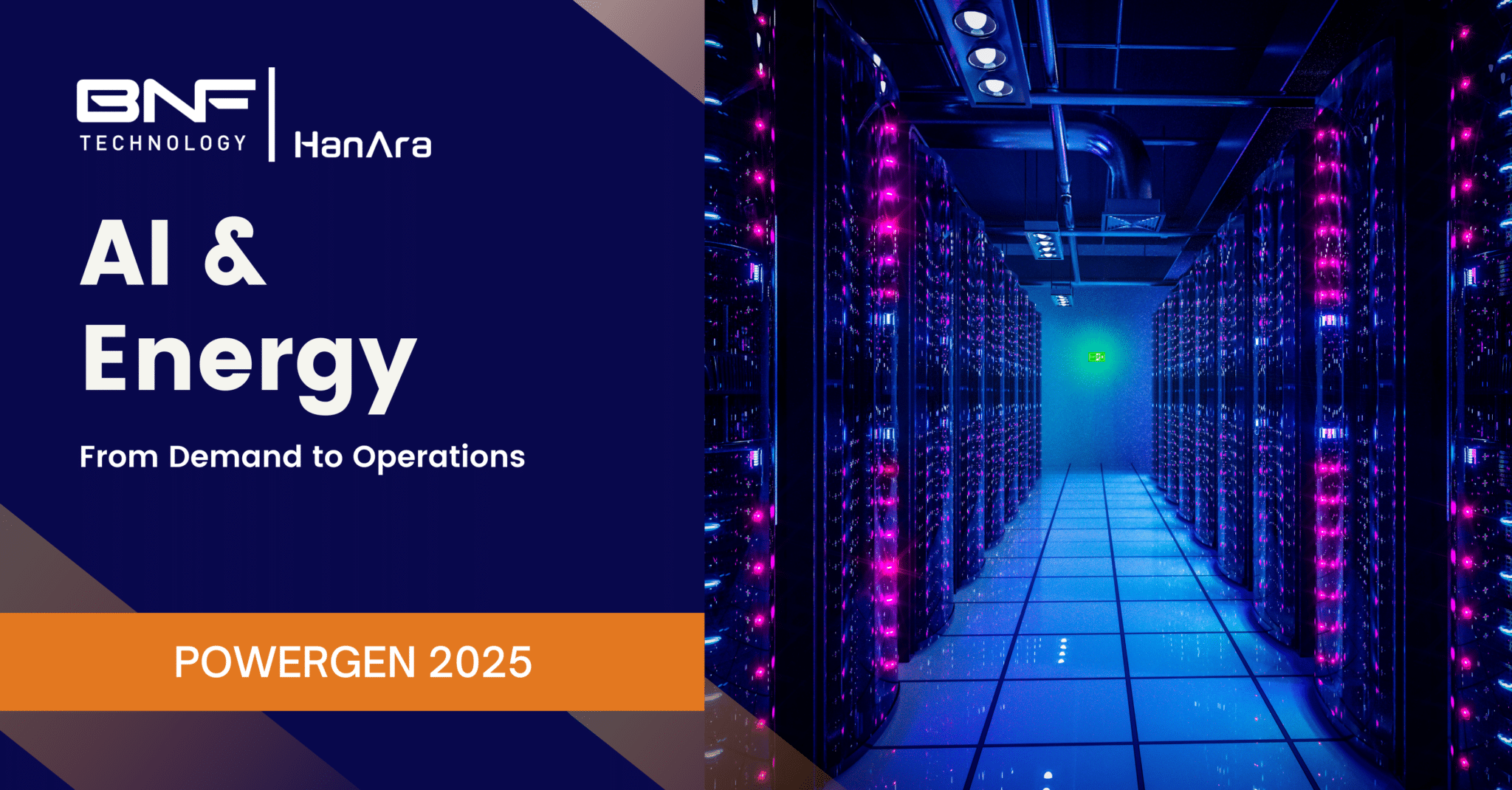Every digital action we take has an energy footprint. That quick thank you email you sent used energy. That creative image you generated with ChatGPT used more energy. As artificial intelligence advances—from increasingly sophisticated large language models (LLMs) to more capable inferential AI systems—our energy demands grow. This growing energy demand isn’t just a technical challenge; it’s shaping our energy infrastructure landscape and operations.
No Moore’s Law for AI Yet
While the tech industry has relied on Moore’s Law to predict computing advancements, AI development follows a different, more complex pattern. The relationship between AI capabilities and energy consumption doesn’t follow the neat, predictable doubling that we’ve come to expect from traditional computing advances. Instead, AI systems follow scaling laws, where performance improvements require exponential increases in computing power, training data, and model size.
Moore’s Law: observation made by Intel co-founder Gordon Moore in 1965. He noticed that the number of transistors that could fit on an integrated circuit (microchip) doubled approximately every 24 months while the cost was halving. This pattern of exponential growth in computing power and efficiency held remarkably steady for several decades, driving the rapid advancement of digital technology. However, many experts now argue that Moore’s Law is breaking down or has already ended.
The pace of this growth is staggering. For example: GPT-1 (2018) had 117 million parameters in its model, while GPT-3 (2020) had 175 billion parameters. However, this explosive growth has highlighted potential cost and energy constraints. For a general user, it is not uncommon to log onto an LLM today and have it tell you they are experiencing heavy loads.
The Infrastructure Challenge
Recent findings from the Department of Energy paint a striking picture of our changing energy landscape. Data centers are now requesting unprecedented power supplies, often ranging from 300 to 1000 megawatts with aggressive implementation timelines of just one to three years. These demands are stretching the industry to its limits, creating new challenges for energy providers and communities alike.
The energy sector is innovating rapidly to meet the opportunities presented by AI advancement. Energy providers are developing creative solutions, including flexible generation options and smart integration of renewable energy sources. This evolution represents more than just capacity expansion – it showcases how the power industry is pioneering new approaches to generation, storage, and distribution.
In addition, the opportunities and considerations vary across regions. As highlighted in the DOE report, the growth of AI facilities presents both challenges and possibilities for local communities. Early engagement between energy providers, data center developers, and communities is helping create collaborative solutions that benefit all stakeholders. This collaborative approach helps align infrastructure development timelines with industry growth, creating sustainable paths forward for both technological advancement and community development.
How AI Can Impact Energy Operations
While AI’s energy consumption presents challenges, it also offers transformative opportunities to improve energy operations. However, it’s crucial to understand that AI is not a magic solution – it’s a tool to augment existing expertise, not replace it.
A Tool to Augment Your Expertise
The key to successful AI implementation lies in understanding its role as an enhancement to human capabilities. While AI can dramatically streamline processes and improve efficiency, it doesn’t eliminate the need for human oversight and expertise. Domain knowledge becomes more valuable, not less, as AI systems require monitoring, adjustment, and interpretation.
Strategic Implementation Considerations
Successful integration of AI into energy operations requires a thoughtful, comprehensive approach. Organizations must start by clearly defining their objectives and challenges. What specific problems are you trying to solve? How will success be measured? These fundamental questions help ensure that AI is the right solution and not just a technological Band-Aid.
Operational integration goes beyond technical implementation. It requires careful consideration of workforce training, establishment of clear protocols for AI-assisted decision-making, and development of contingency plans. Organizations must think through how AI will fit into their daily operations and what changes may be needed in existing processes and procedures.
Balancing Innovation and Sustainability
The push for AI advancement must be balanced with environmental responsibility. Organizations implementing AI systems should consider energy efficiency in their design phases, not as an afterthought. This might include exploring renewable energy options, implementing sophisticated monitoring systems for energy consumption, and developing strategies for managing peak loads.
Looking Ahead: Industry Trends
The energy sector stands at a crucial intersection of providing power for AI advancement while also benefiting from AI capabilities. Success requires careful planning and expert guidance. Organizations should begin by assessing their current energy infrastructure and identifying opportunities for AI integration. This assessment should lead to comprehensive implementation strategies developed in partnership with experienced technology providers.
Ready to explore how AI can enhance your energy operations? Contact us to learn how we help organizations use their data to improve operations with centralized data management and predictive maintenance tools.

